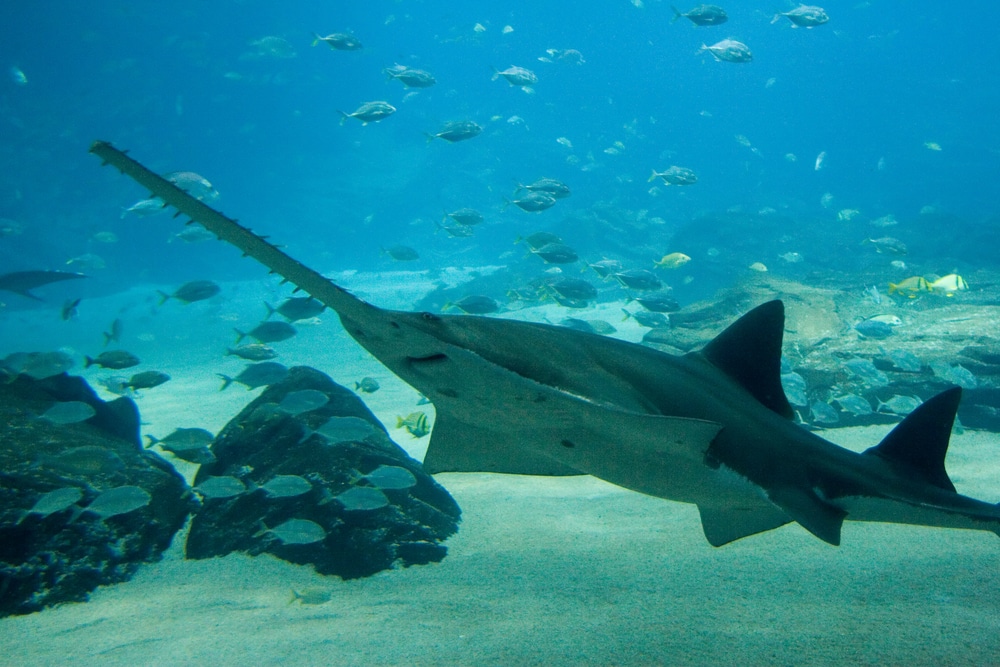The smalltooth sawfish, a critically endangered animal, is even more dangerous than usual in the Florida seas. Six of the rare creatures washed up dead in the past seven days; officials reported Wednesday – a dramatic increase in mortality amid a mysterious die-off that has baffled scientists for months.
These animals, which look like sharks with chainsaw-like mouths, are part of a group of fish called elasmobranchs, which include rays, skates, and sharks. They can live for several decades under normal circumstances. About five mature adults are typically lost each year, mostly when they are accidentally caught in fisheries.
However, according to Wednesday’s report, the Florida Fish and Wildlife Conservation Commission has lost 38 so far this year, six of which occurred just the previous week.
It is still a mystery as to why the sawfish have been dying in record numbers. But divers and anglers have also reported seeing a variety of other species behaving in a highly erratic manner: spinning in circles rather than swimming. Some sawfish, too, have been spotted spinning before dying.
Spinning fish reports began in fall 2023. The spike in sawfish mortalities began in January 2024. It’s “possible that these two events could be related,” the Florida Fish and Wildlife Conservation Commission says.
One distressed sawfish was spotted in Cudjoe Bay in the Florida Keys on April 5. Biologists with the commission and the Mote Marine Laboratory transported the sawfish to a temporary tank at the Mote facility, where it was observed.
The fish’s condition stabilized, and on Thursday, Ripley’s Aquariums Conservation Team transported it to a more permanent Mote quarantine facility for rehabilitation.
The commission and Florida’s Bonefish and Tarpon Trust have recorded more than 200 incidents with more than 30 species swimming in this unusual way. This is happening mostly in the Florida Keys, but there have also been reports as far north as the Miami area.
The smalltooth sawfish was the first marine fish to receive federal protection through the Endangered Species Act in 2003. The animal used to live in waters all throughout the Gulf of Mexico and along the East Coast from Florida to North Carolina, according to the National Oceanic and Atmospheric Administration. Still, their small numbers are generally found only off the coast of Florida.
In addition to the spinning, recent reports from anglers and divers in Florida say they have seen the sawfish beach themselves.
A team of local, state, and federal wildlife experts is scrambling to find out what’s causing the animals to enter these dangerous death spirals.
















